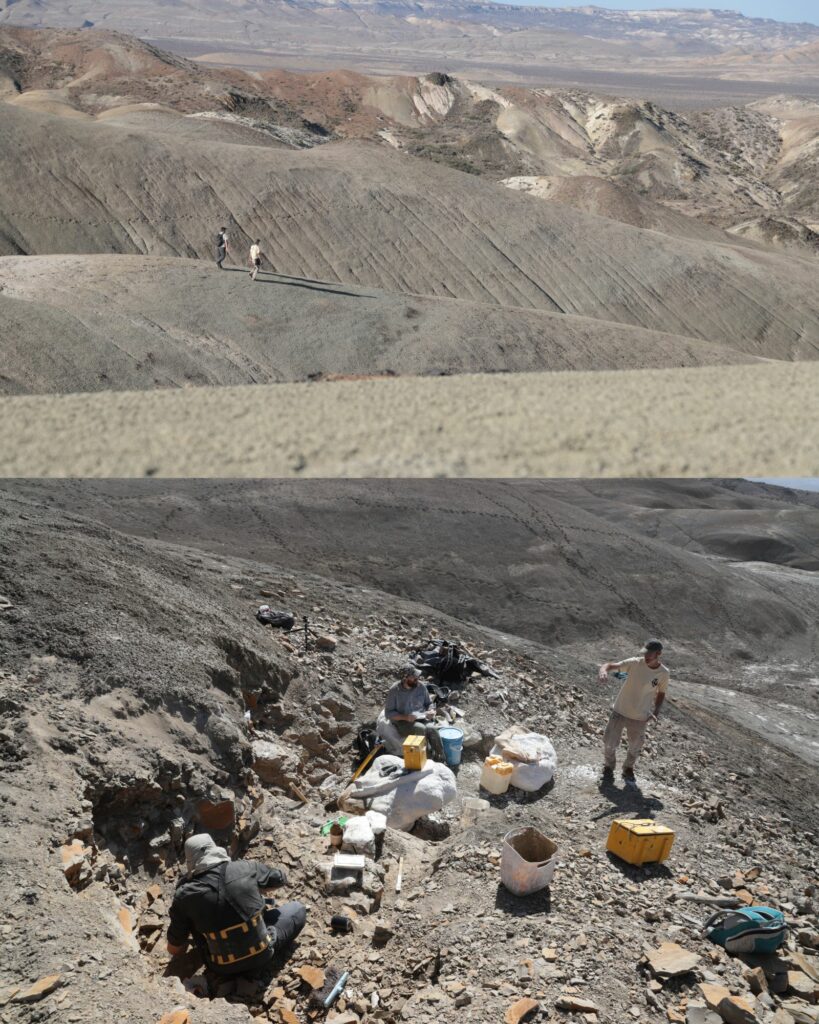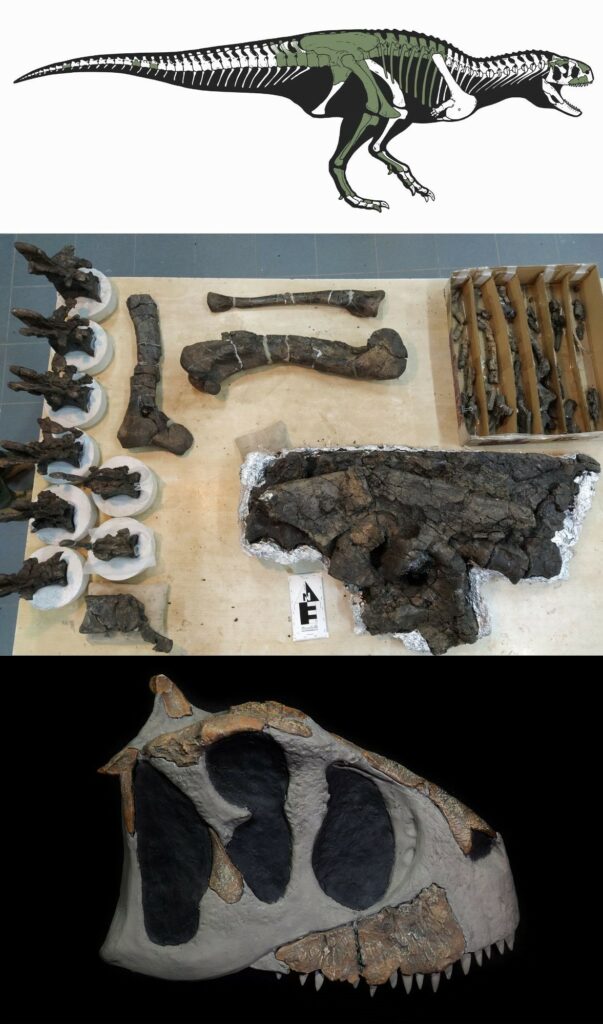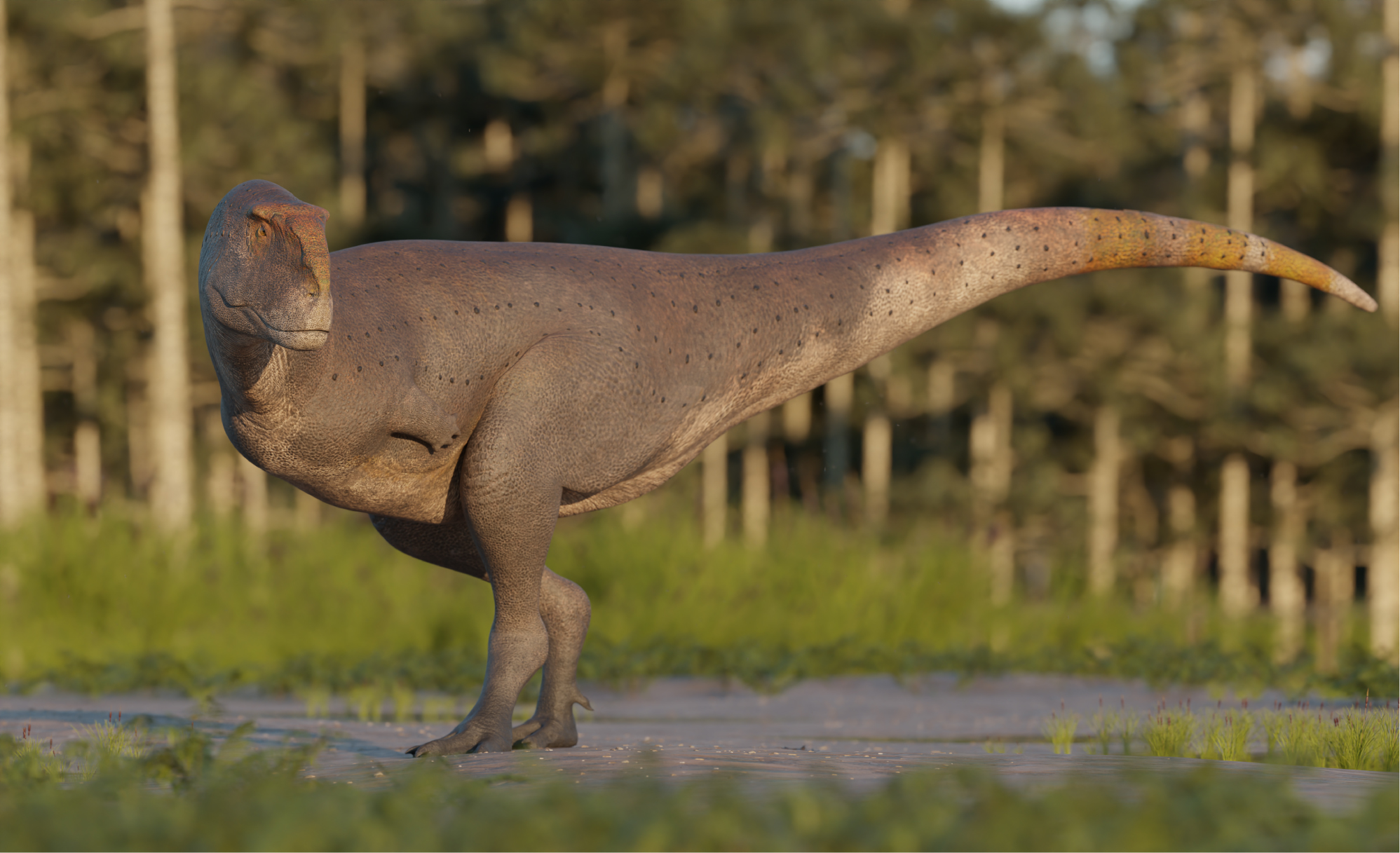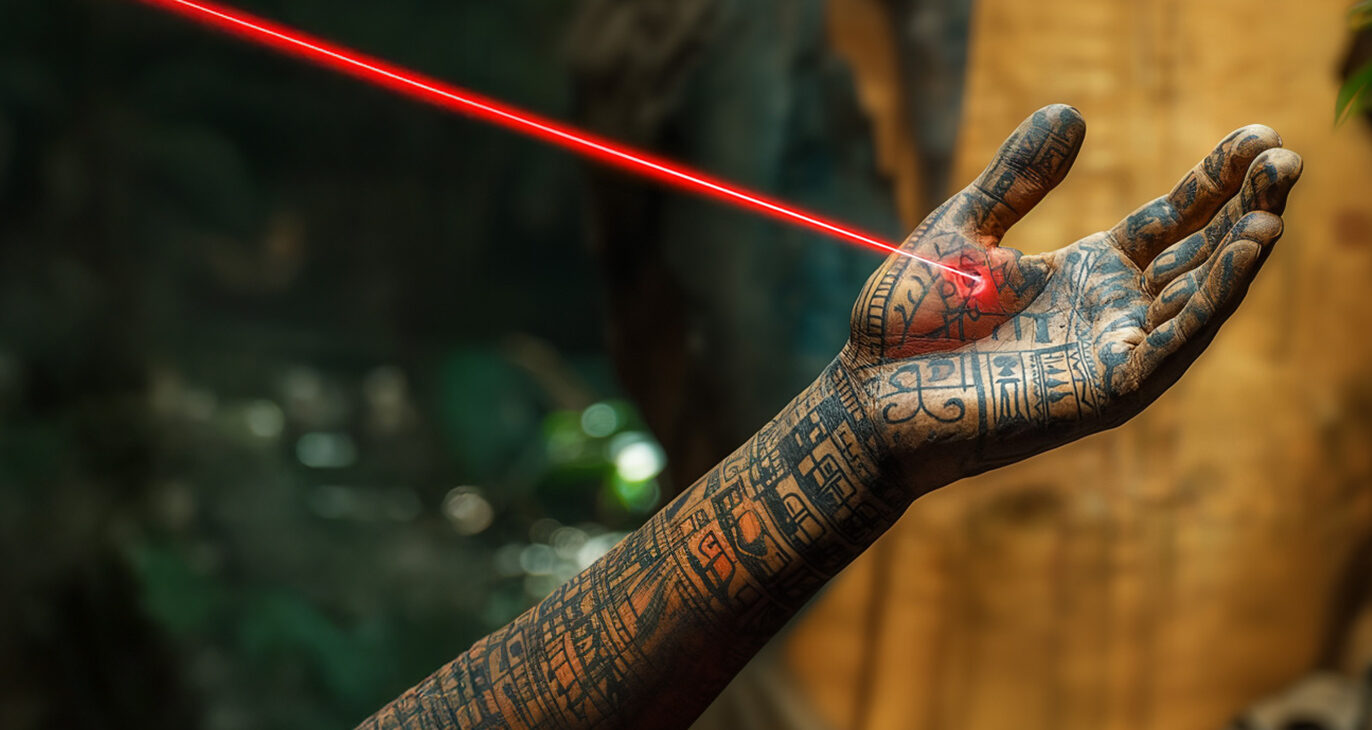Remember Carnotaurus? If you’ve ever seen the film Jurassic World or the documentary Prehistoric Planet, it’d be hard to forget: a terrifying, scaly, highly mobile apex predator with a characteristic pair of spiky horns protruding just above its eyes, which lead to its Latin name, meaning “meat bull”. Well, now it has a new sibling – and it’s almost as fearsome.
The newly discovered species, Koleken inakayali, is another member of the southern hemisphere dinosaur group, the abelisaurids, which also includes Carnotaurus, and the two species lived alongside each other. It was unearthed by a team led by Dr Michael Pittman, Assistant Professor at The Chinese University of Hong Kong (CUHK)’s School of Life Sciences, and National Geographic Explorer Dr Diego Pol, during two years of research in the 69-million-year-old La Colonia Formation in Patagonia, southern Argentina. (The new species’ name, in fact, is taken from the language of the local Tehuelche people.)
The discovery is quite a rarity – it’s the first time an abelisaurid species has been discovered in La Colonia since Carnotaurus nearly 40 years ago. As a result, it has ignited a great deal of excitement in the palaeontological community, especially given how extensively people have previously examined the same region without finding anything like it.

The abelisaurids lived in the ancient continent of Gondwana, made up of the land masses that have since become South America, Africa, India, Madagascar, Australia and Antarctica. The current finding dates from the Late Cretaceous period, just before the Cretaceous-Paleogene extinction event about 66 million years ago – the one that wiped out the dinosaurs, along with more than three-quarters of all other species. It consists of a pretty extensive set of bones: a complete hip, almost complete back and legs, and several skull and tail bones. Koleken inakayali, the team reveal, was smaller than Carnotaurus, and lacked its horns.
When the team discovered it, says Dr Pittman, “We immediately knew we had an abelisaurid, so we had assumed the specimen was another individual of Carnotaurus, the famous horned carnivore from the same rock formation. However, the more we studied the specimen, the more this hypothesis did not fit. The conclusion we arrived at was that our specimen was of a new smaller, hornless abelisaurid species.”

The research shows for the first time that there was more than one abelisaurid species living in the area side by side at the time, and that this family of dinosaurs was quite diverse.
“Koleken was one of the apex predators in its Late Cretaceous habitat where a river met the sea,” says Dr Pittman. “Compared to tyrannosaurs like T. rex that dominated the northern continents at the same time, Koleken was more lightly built and had a shorter face. It had short arms too but compared to T. rex, those of abelisaurids like Koleken were longer and more robust, so were probably more useful. Koleken was not the largest kind of carnivorous dinosaur but it would have been about the size of a minibus.”
Following the find, the team produced an updated family tree for abelisaurids and their close noasaurid relatives; Koleken was one of the last known abelisaurid species, diverging from a common ancestor much later than others. The team then compared the ways in which abelisaurids and noasaurids evolved over time. The abelisaurids exhibited high rates of skull evolution associated with the evolution of their uniquely short and lightly built skull. By contrast, in their close noasaurid relatives, it is the back bones and hindlimbs that show a particularly high rate of evolution.
The high rate of skull evolution, says Dr Pittman, is likely to have been a key reason why abelisaurids flourished. “The skulls of abelisaurids were relatively lightly built for such large carnivores and usually had short faces, like flat-faced dog and cat breeds. Their teeth were also quite broad compared to typical carnivorous dinosaurs. This suggests that abelisaurids differentiated their particular carnivorous niche. Finding that this happened so quickly shows that this change was very important to their success. Indeed, in the southern hemisphere, abelisaurids became the dominant carnivores at the end of the Cretaceous.”
The research continues, with the team still visiting Patagonia every year to look for more specimens – both of the two abelisaurids and of other species.
“We have found other new dinosaur species that we can’t wait to share in the future,” says Dr Pittman. “At present there are no Late Cretaceous habitats, including La Colonia, that had more than two abelisaurid species. This seems to be telling us something about how these top predators divided things up. Even if we don’t find anymore new abelisaurid species, finding more specimens of Koleken and Carnotaurus will help us to better understand how they interacted with each other and with other animals.”











